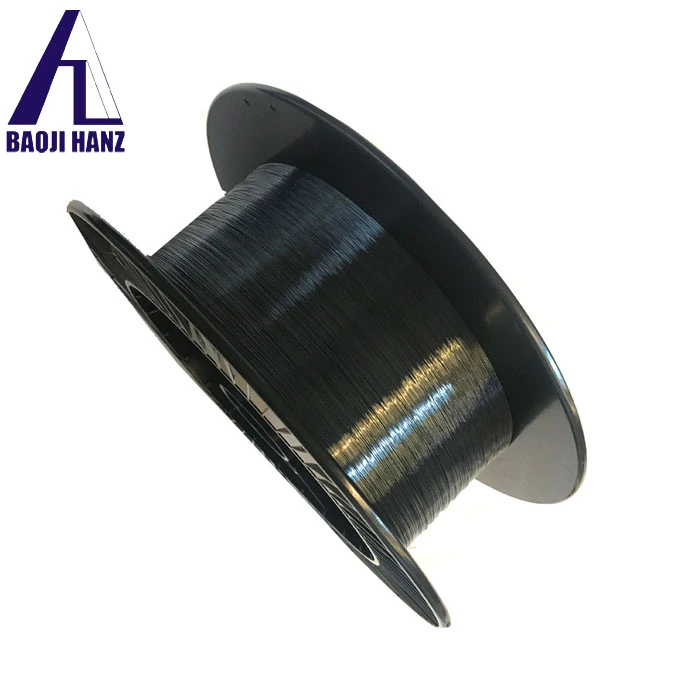Does nitinol wire have memory alloy?
2024-08-09 20:46:10
Nitinol wire is a fascinating material that has gained significant attention in various industries due to its unique properties. One of the most intriguing aspects of nitinol wire is its ability to remember its original shape, a characteristic that has led to its classification as a "shape memory alloy."
Does Nitinol Wire Have Memory Alloy?
Nitinol wire is indeed classified as a shape memory alloy (SMA). This means that it can return to a pre-determined shape when subjected to certain stimuli, typically heat. The term "nitinol" itself is derived from its composition and discovery location: Nickel (Ni) and Titanium (Ti), along with the Naval Ordnance Laboratory (NOL) where it was first developed.
How Does Nitinol Wire Work?
Nitinol wire works on the principle of phase transformation. It exists in two different crystalline phases: martensite and austenite. At lower temperatures, nitinol is in the martensite phase, which is relatively soft and easily deformed. When heated, it transforms into the austenite phase, which is much stronger and returns to its original shape. This transformation can be reversed by cooling, allowing the material to switch between phases multiple times.
The ability of nitinol to remember and return to its original shape is due to the specific arrangement of atoms in its crystalline structure. When the wire is deformed in the martensite phase, the atoms shift positions but retain a memory of their original configuration. Heating the wire to the austenite phase triggers the atoms to return to their initial arrangement, thus restoring the wire's original shape.
What Are the Applications of Nitinol Wire?
Nitinol wire's unique properties have made it invaluable in a variety of applications across different industries. Some of the most notable applications include:
-
Medical Devices: Nitinol's biocompatibility and shape memory properties make it ideal for medical devices such as stents, guidewires, and orthodontic braces. For example, nitinol stents can be inserted into a collapsed state and then expand to support blood vessels once inside the body.
-
Aerospace: In the aerospace industry, nitinol is used in actuators and damping systems. Its ability to undergo significant deformation and then return to its original shape makes it useful in applications requiring precise movement control.
-
Consumer Electronics: Nitinol is used in eyeglass frames that can bend without breaking and return to their original shape. It is also employed in various other gadgets and wearable technology due to its durability and flexibility.
-
Robotics: Nitinol actuators are used in robotics for their high power-to-weight ratio and reliability. They are particularly useful in applications where compact and efficient movement is required.
-
Automotive: In the automotive industry, nitinol is used in temperature control systems, such as thermostats and sensors, due to its ability to respond predictably to temperature changes.
How to Shape Nitinol Wire?
Shaping nitinol wire involves a process known as "training" the wire. This process allows the wire to "learn" a new shape that it can revert to when heated. Here are the basic steps involved in shaping nitinol wire:
-
Forming the Shape: The first step is to deform the nitinol wire into the desired shape while it is in its martensite phase. This can be done by bending or twisting the wire.
-
Heat Treatment: Once the wire is in the desired shape, it needs to be heated to a specific temperature, typically between 450°C and 550°C, depending on the composition of the alloy. This heat treatment allows the atoms in the wire to rearrange into the austenite phase, fixing the new shape.
-
Quenching: After heat treatment, the wire is rapidly cooled, usually by immersing it in water. This quenching process helps to lock the atoms into their new arrangement, ensuring that the wire retains its shape.
-
Testing: The final step is to test the wire by heating it again to see if it returns to the desired shape. If it does, the training process has been successful. If not, the process may need to be repeated with adjustments.
Company Introduction
Baoji Hanz Metal Material Co., Ltd., established on November 15, 2017, is located in the Baoji Titanium Valley Nonferrous Metals Base in China. The company boasts a complete set of sophisticated production and processing equipment, excellent technology, and a professional sales and after-sales team. Our main business includes nitinol shape memory alloy, superelastic nitinol alloy, and nickel titanium alloy. We also specialize in industrial furnace, mechanical equipment design, manufacturing, production, and service.
Baoji Hanz Metal Material Co., Ltd. is equipped with advanced R&D, production, and testing equipment. We are continuously committed to converting scientific research results into practical applications and localizing imported products. Our major projects include high-purity metal material preparation, ultra-large and ultra-thin casting, radiation generation and control material development. We are dedicated to broadening new ideas for material purification, processing, and new material preparation, providing new markets and opportunities.
Our business philosophy is centered on "leading technology, excellent quality, stable development, win-win cooperation." We are eager to collaborate with colleagues from all walks of life to seize business opportunities and create a better future. For inquiries, please contact us at baojihanz-niti@hanztech.cn.
References
- “Nitinol Shape Memory Alloys: Fundamentals and Applications.” ASM International.
- “Shape Memory Alloys.” NASA.
- “Medical Applications of Nitinol.” Medical Device and Diagnostic Industry.
- “Nitinol in Aerospace Applications.” Aerospace Manufacturing and Design.
- “Nitinol in Consumer Electronics.” IEEE Xplore.
- “The Science of Nitinol: Understanding the Shape Memory Effect.” Materials Today.
- “Training Nitinol Wires for Use in Medical Devices.” Journal of Biomedical Materials Research.
- “Heat Treatment of Nitinol for Industrial Applications.” Metallurgical and Materials Transactions A.
- “Nitinol in Robotics: Actuators and Sensors.” Robotics and Autonomous Systems.
- “Automotive Applications of Shape Memory Alloys.” SAE International.
